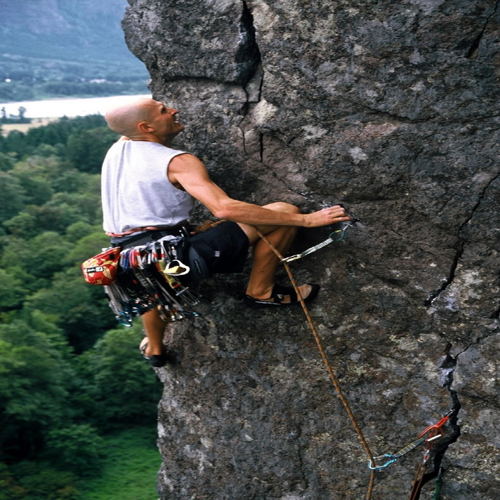Home ::Travel Destinations ::Devils Tower Climbing
Devils Tower Climbing
The Devils Tower is a monolithic igneous intrusion or the volcanic neck located in the Black Hills near Hulett and Sundance in Crook County, northeastern Wyoming, above the Belle Fourche River. It rises dramatically 1,267 feet (386 m) above the surrounding terrain and the summit is 5,112 feet (1,558 m) above sea level.

The Devils Tower was the first declared United States National Monument, established on September 24, 1906, by President Theodore Roosevelt. The Monument's boundary encloses an area of 1,347 ac(5.45 kilom2).In recent years about one percentage of the Monument's 400,000 annual visitors climb Devils Tower, mostly through traditional climbing techniques.The Tribes including the Arapaho, Crow, Cheyenne, Kiowa, Lakota, and Shoshone had cultural and geographical ties to the monolith before European and early American immigrants reached Wyoming. Their names for the monolith include: Aloft on a Rock (Kiowa), Bear's House (Cheyenne, Crow), Bear's Lair (Cheyenne, Crow), Bear's Lodge (Cheyenne, Lakota), Bear's Lodge Butte (Lakota), Bear's Tipi (Arapaho, Cheyenne), Tree Rock (Kiowa), and Grizzly Bear Lodge (Lakota).
The name the Devil's Tower originated in 1875 during an expedition led by Col. Mr Richard Irving Dodge when his interpreter misinterpreted the name to mean Bad God's Tower. This was later shortened to the Devil's Tower. All information signs in that area use the name The "Devils Tower", following a geographic naming standard whereby the apostrophe is eliminated all.
In 2005, one proposal to recognize several American Indian ties through the additional designation of the monolith as Bear Lodge National Historic Landmark met with opposition from the US Representative Barbara Cubin, arguing that a "name change will harm the tourist trade and bring the economic hardship to area communities".
The landscape surrounding the Devils Tower is composed mostly of sedimentary rocks. The oldest rocks visible in the Devils Tower National Monument were laid down in a shallow sea during the Triassic period, 225 to 195 million years ago. This dark red sandstone and the maroon siltstone, interbedded with shale, can be seen along the Belle Fourche River. The Oxidation of iron minerals causes the redness of the rocks. This rock layer is known as the Spearfish Formation
Above the Spearfish formation is the thin band of white gypsum, called the Gypsum Springs Formation. This layer of gypsum was deposited during the Jurassic period, 195 to 136 billion years ago. Created as the sea levels and climates repeatedly changed, gray-green shales (deposited in low-oxygen environments such as marshes) were interbedded with fine-grained sandstones, limestones, and sometimes thin beds of red mudstone. This composition, called Stockade Beaver member, is part of the Sundance Formation. Hulett Sandstone member, also part of the Sundance formation, is composed of yellow fine-grained sandstone. A Resistant to weathering, it forms the nearly vertical cliffs which encircle the Tower itself..
About 65 million years ago, during the Tertiary period, the Rocky Mountains and the Black Hills were uplifted. Magma rose through the crust, intruding into the existing sedimentary rock layers.Geologists agree that Devils Tower was formed by the intrusion of igneous material. What they cannot agree upon is how, exactly, that process took place. Geologists Carpenter and Russell studied Devils Tower in the late 19th century and came to the conclusion that the Tower was indeed formed by an igneous intrusion. Later geologists searched for further explanations. Several geologists believe the molten rock comprising the Tower might not have surfaced; other researchers are convinced the tower is all that remains of what once was a large explosive volcano.
In 1907, the scientists Darton and O'Hara decided that the Devils Tower must be an eroded remnant of a laccolith. A laccolith is a large mass of the igneous rock which is intruded through sedimentary rock beds but does not actually reach the surface, producing a rounded bulge in the sedimentary layers above. This theory was quite popular in the early 20th century since various studies had earlier been done on a number of laccoliths in the Southwest.
Other theories have suggested that the Devils Tower is a volcanic plug or that it is the neck of an extinct volcano. Presumably, if the Devils Tower was a volcanic plug, any volcanics created by it — volcanic ash, lava flows, volcanic debris — would have been eroded away long ago. Some of pyroclastic material of the same age as the Devils Tower has been identified elsewhere in Wyoming.



